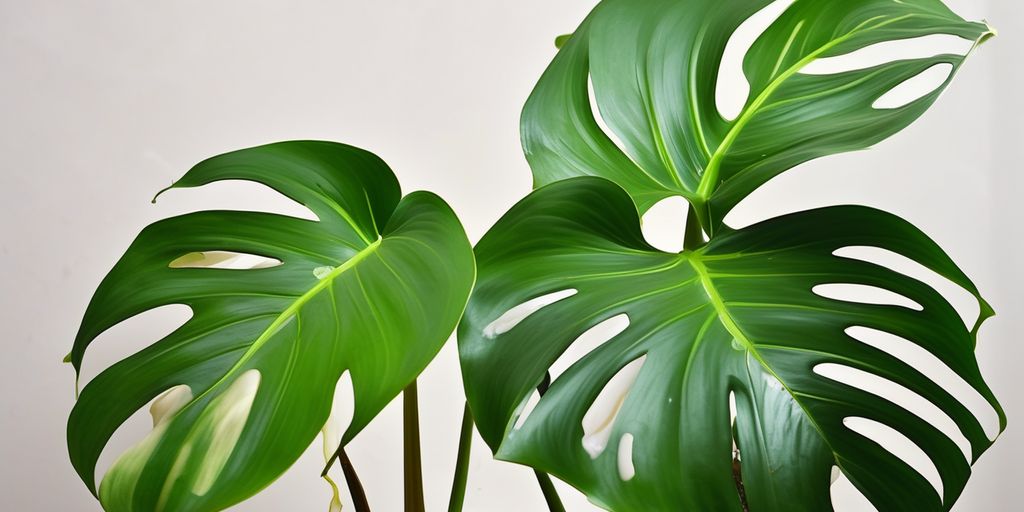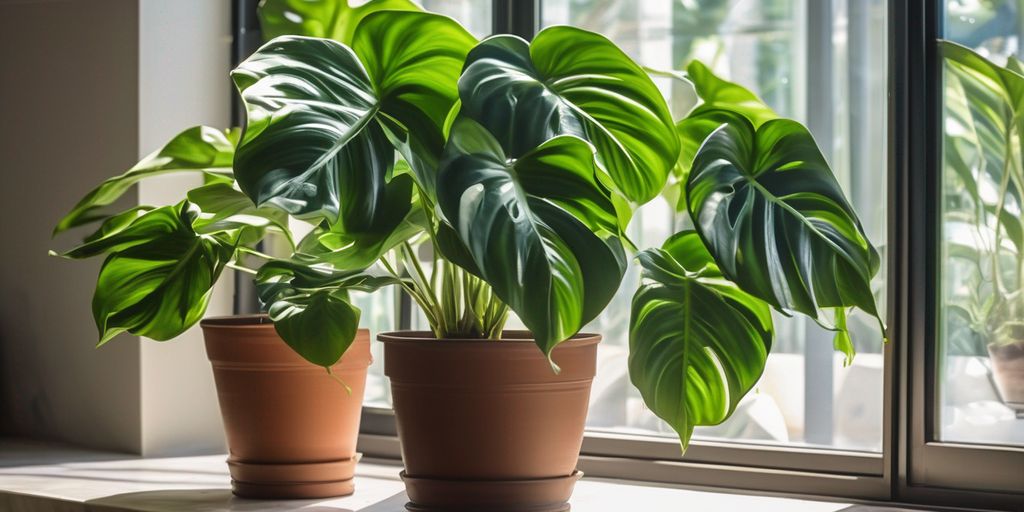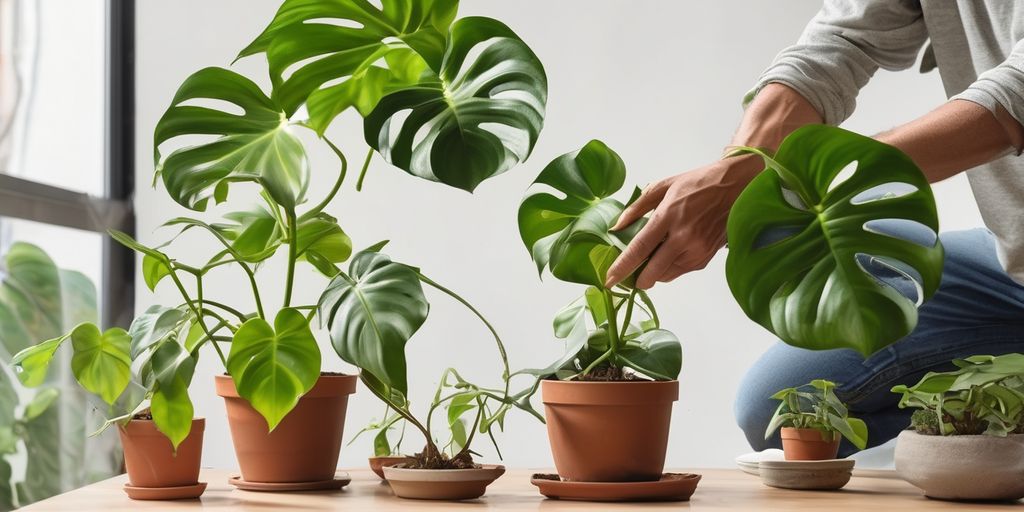The Philodendron Camposportoanum, a rare and exotic plant, captivates plant enthusiasts with its unique aesthetic and intriguing growth habits. This article provides a comprehensive guide on how to cultivate and care for this exceptional plant, ensuring it thrives in your environment.
Contents
- 1 Understanding the Philodendron Camposportoanum
- 2 Optimal Growing Conditions
- 3 Watering and Feeding
- 4 Propagation Methods
- 5 Common Pests and Diseases
- 6 Pruning and Maintenance
- 7 Styling and Display
- 8 Conclusion
- 9 Frequently Asked Questions
- 9.1 What is the origin of the Philodendron Camposportoanum?
- 9.2 How often should I water my Philodendron Camposportoanum?
- 9.3 What are the ideal light conditions for growing a Philodendron Camposportoanum?
- 9.4 How do I propagate a Philodendron Camposportoanum?
- 9.5 What are common pests that affect the Philodendron Camposportoanum?
- 9.6 What type of soil is best for a Philodendron Camposportoanum?
Key Takeaways
- Understanding the origin and unique features of Philodendron Camposportoanum is crucial for appreciating its rarity and conservation needs.
- Creating optimal growing conditions, including appropriate light, temperature, and soil, is essential for the plant’s health.
- Regular and appropriate watering and feeding are key to maintaining the vitality of Philodendron Camposportoanum.
- Effective propagation methods such as stem cuttings, layering, and seed germination can help expand your collection of this rare plant.
- Preventative measures against common pests and diseases, along with proper pruning and maintenance, will ensure long-term health and aesthetic appeal.
Understanding the Philodendron Camposportoanum
Origin and Habitat
The Philodendron Camposportoanum originates from the rainforests of Brazil, thriving in the warm and humid environment. This plant is typically found in the understory of the forest, where it enjoys filtered light and rich, organic soil.
Distinctive Features
Philodendron Camposportoanum is known for its velvety, dark green leaves with striking white veins. The leaves are heart-shaped and can grow up to 20 cm in length, making it a visually appealing addition to any indoor plant collection.
Conservation Status
Due to its specific habitat requirements and the ongoing deforestation in its native region, the Philodendron Camposportoanum is considered to be at risk. Conservation efforts are crucial to preserve this unique species in its natural habitat.
Optimal Growing Conditions
Light Requirements
Philodendron Camposportoanum thrives in bright, indirect light. Exposure to direct sunlight can scorch the leaves, while too little light can cause stunted growth. A north-facing window or a spot that receives filtered light is ideal.
Temperature and Humidity
This plant prefers a warm and humid environment, typical of its native tropical habitat. Maintain indoor temperatures between 65°F to 80°F (18°C to 27°C) and humidity levels around 60-80%. Using a humidifier or placing a water tray near the plant can help achieve the desired humidity.
Soil Preferences
The right soil mix is crucial for the health of Philodendron Camposportoanum. A well-draining, airy soil mix that retains moisture without becoming waterlogged is best. Components like peat, perlite, and vermiculite make for an ideal mix. Regularly check the soil moisture and ensure the pot has adequate drainage to prevent root rot.
Watering and Feeding
Watering Techniques
Proper watering is crucial for the health of Philodendron Camposportoanum. Water the plant when the top inch of soil feels dry. Use lukewarm water and ensure thorough soaking until water runs out of the drainage holes.
Fertilization Schedule
Feed your Philodendron Camposportoanum every month during the growing season with a balanced, water-soluble fertilizer. Reduce feeding to once every two months in the winter. Remember, over-fertilization can harm the plant more than under-fertilization.
Signs of Overwatering and Underwatering
Identifying the signs of improper watering can save your plant from serious issues:
- Overwatering: Leaves turn yellow and drop off, root rot may develop.
- Underwatering: Leaves wilt and dry out.
Ensure you adjust your watering habits according to the season and indoor climate conditions.
Propagation Methods
Stem Cuttings
Stem cuttings are a popular and effective method for propagating Philodendron Camposportoanum. Select a healthy stem with at least two nodes, and cut just below a node using a clean, sharp knife. Place the cutting in water or moist soil, ensuring that at least one node is submerged. Roots typically develop within a few weeks.
Layering
Layering involves encouraging roots to form on a part of the plant while it is still attached to the parent plant. Gently wound the stem and apply a rooting hormone. Secure the wounded part into the soil while still attached to the main plant. This method is particularly useful for larger or more established plants.
Seed Germination
Germinating seeds can be a slow and less reliable method of propagation, but it allows for the growth of new genetic variations. Plant the seeds in a well-draining soil mix and keep them moist and warm. Germination can take several weeks, and it’s important to maintain consistent conditions during this period.
Common Pests and Diseases
Identifying Common Pests
Philodendron Camposportoanum can be susceptible to pests such as aphids, mealybugs, and spider mites. Regular inspection is crucial for early detection and effective management. Look for signs like sticky residue or webbing on the leaves.
Disease Prevention
Preventing diseases in Philodendron Camposportoanum starts with proper care. Ensure the plant is not overwatered and has good air circulation. Using sterile tools and pots can also help prevent the spread of pathogens.
Treatment Options
When pests or diseases are detected, prompt treatment is essential. For pests, insecticidal soap or neem oil can be effective. For fungal infections, remove affected parts and apply a suitable fungicide. Always follow the manufacturer’s instructions for the best results.
Pruning and Maintenance
When to Prune
Pruning should be done during the Philodendron Camposportoanum’s dormant period, typically in late winter or early spring. This timing helps the plant recover faster and grow more vigorously during its active growing season.
Techniques for Pruning
To ensure healthy growth and maintain the desired shape, use sharp, sterilized pruning shears. Remove dead or overgrown branches first, then trim back any excess foliage to promote better air circulation and light penetration.
Maintaining Plant Health
Regular maintenance is crucial for the longevity and aesthetics of your Philodendron Camposportoanum. Ensure that the plant is free from dust and pests by gently wiping the leaves with a damp cloth. Additionally, rotate the plant periodically to ensure even growth and prevent leaning towards the light source.
Styling and Display
Pot Selection
Choosing the right pot for your Philodendron Camposportoanum is crucial not only for its growth but also for its display. Opt for pots with drainage holes to prevent waterlogging. Materials like terracotta or ceramic are ideal as they allow the roots to breathe and provide a stable environment. Consider the size of the pot to be proportional to the plant to ensure it has enough room to grow without being over-potted.
Arrangement Ideas
Creating an appealing arrangement involves considering the space where the plant will live. Grouping plants with varying heights and leaf shapes can create a dynamic visual impact. For a minimalist approach, a single Philodendron Camposportoanum in a sleek, modern pot can serve as a stunning focal point. Use shelves or plant stands to vary the levels, which helps in drawing the eye through the space.
Companion Plants
When selecting companion plants, look for those that thrive under similar conditions. This ensures all plants benefit from the same care routine, reducing maintenance complexity. Suitable companions might include Ferns, Pothos, and other Philodendrons. Here’s a simple list of companion plants that can share the pot with Philodendron Camposportoanum:
- Ferns
- Pothos
- Spider Plant
- Peace Lily
Ensure that each plant has enough space to grow and that their roots do not compete aggressively for nutrients.
Conclusion
In conclusion, the Philodendron Camposportoanum is a unique and captivating plant that can add a touch of the exotic to any indoor garden. By understanding its specific growth requirements and providing the right care, enthusiasts can successfully cultivate this rare species. Remember to provide ample humidity, indirect light, and well-draining soil to see your Philodendron Camposportoanum thrive. With patience and attention to detail, this rare gem can become a stunning highlight in your collection of houseplants.
Frequently Asked Questions
What is the origin of the Philodendron Camposportoanum?
The Philodendron Camposportoanum originates from the tropical rainforests of South America, particularly in Brazil. It thrives in the humid and shaded areas of the forest.
How often should I water my Philodendron Camposportoanum?
Water the plant when the top inch of the soil feels dry. Typically, this means watering once a week, but adjust based on humidity and temperature conditions.
What are the ideal light conditions for growing a Philodendron Camposportoanum?
This plant prefers bright, indirect light. Direct sunlight can scorch its leaves, while too little light can stunt its growth.
How do I propagate a Philodendron Camposportoanum?
Propagation can be done through stem cuttings, layering, or seed germination. Stem cuttings are the most common method, involving cutting a portion of the stem with at least one leaf and allowing it to root in water or soil.
What are common pests that affect the Philodendron Camposportoanum?
Common pests include aphids, spider mites, and mealybugs. Regular inspections and prompt treatment can prevent serious infestations.
What type of soil is best for a Philodendron Camposportoanum?
A well-draining, nutrient-rich potting mix is ideal. You can use a mix designed for aroids or make your own by blending peat, perlite, and vermiculite.




